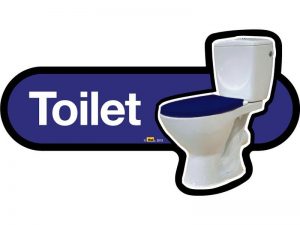
Dementia and the Toilet
The term for being able to control the bladder and bowel is known as continence
Going to the toilet involves a series of complex stages that require memory, dexterity and mobility. A person living with dementia may have difficulties with staying continent for many reasons, they may:
Lose the sensation that they need to go to the toilet.
Be depressed and lack motivation.
Forget where the toilet is.
Not recognise the toilet due to visual problems.
Have difficulty expressing the need to go, due to speech difficulties.
Have difficulty understanding prompts from loved ones and caregivers.
Struggle with their clothing or may not get to the toilet in time.
Experience changes in diet and drinking.
Not recognise when food has “gone off” which may lead to diarrhoea/food poisoning.
This is not necessarily due to the dementia
The first thing I want you to realise is, that this may not be a normal part of the condition, as other physical conditions and medication may also affect a person’s ability to stay continent. I know caregivers often don’t tend to seek help as they feel embarrassed and conscious of trying to keep their loved one’s dignity.
But it is important to speak to your doctor and ask for a continence assessment for them. This is usually done by a specialist continence nurse who will be able to explore the cause in more detail, offer support and advice that may help and thereby reduce the embarrassment and stigma associated with it.
An assessment may also include recommending aids such as raised toilet seats and grab rails that will help if your loved one is struggling with mobility.
What can we do to help?
This includes:
Making sure there is plenty of light in the home (but avoiding shadows). The recommended lighting level is 300 lux.
The toilet seat is a contrasting colour from the floor and walls, to help your loved one see more clearly.
Be aware that if the colour of the flooring between the outside and the toilet is different or too contrasting, your loved one may see it as a step or a hole and not want to step over it.
Keep the toilet door open so that it is visible to them or put a picture sign on the door to identify where the toilet is (making sure the sign is at a height they can see and is not shiny).
Encouraging regular trips to the toilet can be an effective way from preventing “accidents”.
If your loved one becomes a bit resistant to your prompts you could try and say “I think I need to go to the toilet before we go out, why don’t you go first?” or “shall we just pop to the toilet now?”.
Make sure they are eating and drinking well (but give their last drink two hours before bedtime to try and prevent continence problems at night), again there are more suggestions in Chapter 7, Eating and Drinking (How good nutrition and hydration can provide balance in your lives) in Finding the Light in Dementia.



